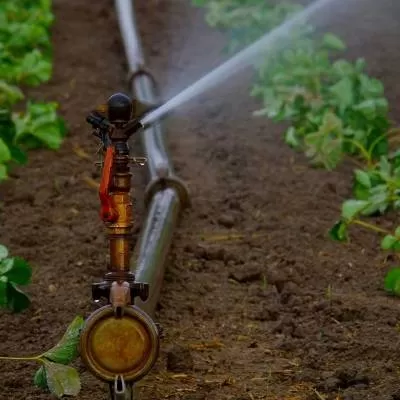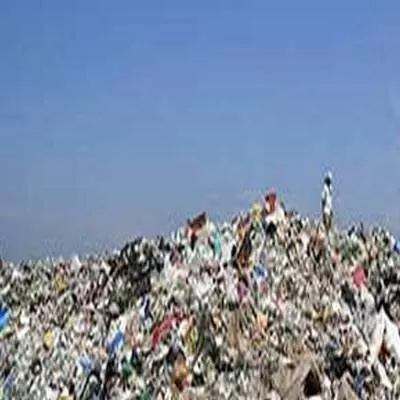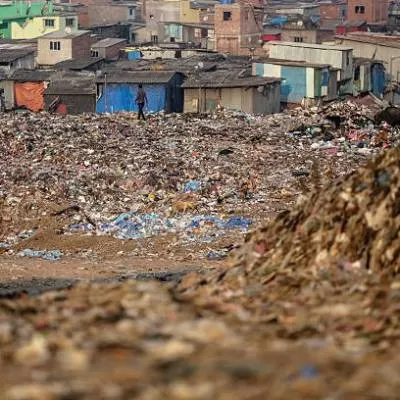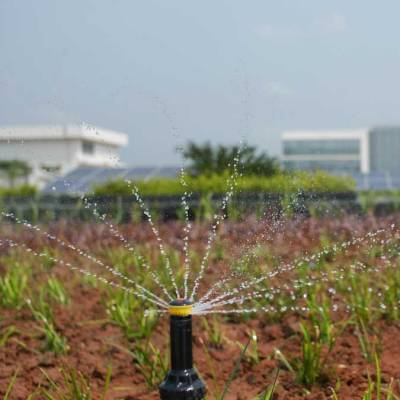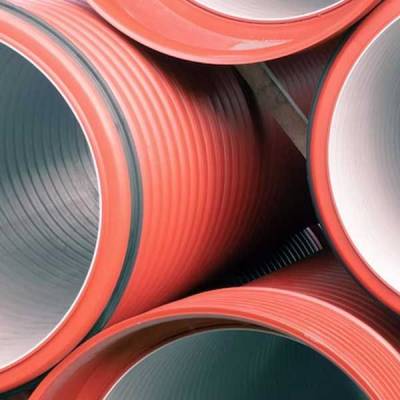- Home
- Infrastructure Urban
- WATER & WASTE
- About Rs.32,500 crore has been committed to the water and sanitation sector in India

About Rs.32,500 crore has been committed to the water and sanitation sector in India
Japan´s partnership with India spans nearly 60 years. The country´s ODA to India started in 1958, when a concessionary ODA loan of Ñ18 billion was extended to supplement the implementation of the Second Five-Year Plan, at the request of the then Prime Minister Jawaharlal Nehru. This was followed by technical cooperation in India in 1966, among others. Today, Japan International Cooperation Agency (JICA) is the world´s largest bilateral agency and India is its largest development partner. Takayoshi Tange, Senior Representative, Japan International Cooperation Agency (JICA), JICA India Office, shares more on funding activities in India with SHRIYAL SETHUMADHAVAN.
For 2015-16, what was JICA´s commitment and how much has been utilised? JICA´s commitment resulted in about Japanese Ñ377 billion (approximately Rs 22,456 crore) for FY2015-16. These are committed amounts and not disbursements.
How does JICA determine the projects to which the agency wants to offer its funds? Is there any type of study or research done on the sector or projects?
The first contact is made from the Department of Economic Affairs of the Ministry of Finance, Government of India, to the Embassy of Japan in India, listing the interested project on the bilateral agenda called the rolling plan. Once a project is listed on the rolling plan, depending on the maturity of the project, JICA will decide the next steps to be followed.
From time to time, JICA conducts additional surveys or complementary studies at this stage. For a project to be taken up, it is important that it fits within the Japanese Governments´ ODA strategy for India, and meets JICA´s feasibility criteria, including compliance with procedures to be followed.
Does the agency offer its assistance to all the projects to which it provides funds? Tell us about your working model.
Not for all. We try to engage technical cooperation where we find a good opportunity to enhance development impacts, and where we find a highly motivated and collaborative counterpart.
Tell us about your focus in the transportation space.
In the transportation space, the agency has shown keen interest in supporting six projects with a total debt component of over Rs 38,700 crore.
What funds is JICA offering to the Dedicated Freight Corridor (DFC) projects?
The western corridor of the DFC, connecting the 1,500 km between Delhi and Mumbai, is the logistic backbone of the Delhi-Mumbai Industrial Corridor (DMIC). The DFC is expected to play a transformational role for industries as well as the business climate of the DMIC area. JICA has been involved in the DFC project from its initial feasibility study stage; being a bilateral summit committed project, JICA is committed to its successful inauguration. To date, JICA has committed an aggregate amount of about Rs 19,897 crore for the project, and will continue financing for its smooth implementation.
How has your experience been in funding DMIC, which has partially taken off, and the Chennai-Bengaluru Industrial Corridor (CBIC), which is still in its initial stage?
As for DMIC, most of the projects are not JICA-related projects, while JICA assists the DMIC through technical cooperation for the DMICDC. Recently, DMICDC has been given more responsibility regarding development of industrial corridors in India, and we expect that it is further empowered to smoothly undertake its new responsibilities.
Regarding CBIC, JICA finalised the CBIC master plan report in June 2015. In contrast with DMIC, CBIC has a solidly structured basis regarding necessitated projects. Through the CBIC study, stakeholders (including the Centre and state governments) identified three nodes and 34 prioritised infrastructure projects.

How much have you funded to the water and sanitation sectors? Are there any projects to which you have offered your assistance?
An aggregate amount equivalent to about Rs 32,500 crore has been committed to the water and sanitation sector in India. JICA´s ongoing portfolio consists of 20 projects across the country, from large urban projects in cities such as Delhi and Bengaluru, down to rural water supply projects in Rajasthan and Tamil Nadu, including investment lending as well as technical assistance projects associated with them.
Tell us about your interest in funding projects in the energy sector. Have there been any recent activities in this direction?
Our focus in India is to increase power supply capacity through highly efficient technology (ie ultra-super critical thermal power plant), to lower transmission and distribution losses (high voltage transmission line, low-loss conductor, smart grid, and so on), aiming to enhance efficient energy utilisation by promoting energy conservation and renewable energy.
JICA´s ongoing portfolio consists of nine projects - seven transmission and distribution, one credit line for renewable energy projects and one credit line for energy efficiency investment of SMEs.
While Indian banks these days are reluctant to fund solar projects, is JICA taking up projects of this nature?
We do not necessarily exclude solar, and JICA´s selection criteria is, by nature, different from that of a private bank. But we would not take up a project where a private bank had failed and there exist complicated aftermaths, naturally. On the other end, large solar power on the grid requires stabilisation, and we are looking into transmission projects with stabilisers and pumped storage hydropower projects. What potential do you foresee in the roads sector in India, especially projects in the northeast? Are there any specific projects that you are keen on funding in this sector? The Government of India is taking up various road improvement projects under the Special Accelerated Road Development Program for North East (SARDP-NE) aiming at better connectivity in the region. In line with this, Japan, following summit-level commitments with India, has been engaged in strengthening connectivity with the view to lift socioeconomic development in the Northeast. Based on the Exchange of Notes between the two governments, once leftover Indian government procedures are done, JICA will fund NH-51 in Meghalaya state from Tura to Dalu (51 km) as well as NH-54 in Mizoram state from Aizawl to Tuipang (350 km) through an ODA loan to be implemented by the National Highways and Infrastructure Development Corporation Ltd (NHIDCL). Further, JICA will support slope protection, which is another important challenge countrywide, through technical cooperation.
To share your lending experience with us, write in at feedback@ConstructionWorld.in
- Takayoshi Tange, Senior Representative, Japan International Cooperation Agency (JICA), JICA India Office Japan´s partnership with India spans nearly 60 years. The country´s ODA to India started in 1958, when a concessionary ODA loan of Ñ18 billion was extended to supplement the implementation of the Second Five-Year Plan, at the request of the then Prime Minister Jawaharlal Nehru. This was followed by technical cooperation in India in 1966, among others. Today, Japan International Cooperation Agency (JICA) is the world´s largest bilateral agency and India is its largest development partner. Takayoshi Tange, Senior Representative, Japan International Cooperation Agency (JICA), JICA India Office, shares more on funding activities in India with SHRIYAL SETHUMADHAVAN. For 2015-16, what was JICA´s commitment and how much has been utilised? JICA´s commitment resulted in about Japanese Ñ377 billion (approximately Rs 22,456 crore) for FY2015-16. These are committed amounts and not disbursements. How does JICA determine the projects to which the agency wants to offer its funds? Is there any type of study or research done on the sector or projects? The first contact is made from the Department of Economic Affairs of the Ministry of Finance, Government of India, to the Embassy of Japan in India, listing the interested project on the bilateral agenda called the rolling plan. Once a project is listed on the rolling plan, depending on the maturity of the project, JICA will decide the next steps to be followed. From time to time, JICA conducts additional surveys or complementary studies at this stage. For a project to be taken up, it is important that it fits within the Japanese Governments´ ODA strategy for India, and meets JICA´s feasibility criteria, including compliance with procedures to be followed. Does the agency offer its assistance to all the projects to which it provides funds? Tell us about your working model. Not for all. We try to engage technical cooperation where we find a good opportunity to enhance development impacts, and where we find a highly motivated and collaborative counterpart. Tell us about your focus in the transportation space. In the transportation space, the agency has shown keen interest in supporting six projects with a total debt component of over Rs 38,700 crore. What funds is JICA offering to the Dedicated Freight Corridor (DFC) projects? The western corridor of the DFC, connecting the 1,500 km between Delhi and Mumbai, is the logistic backbone of the Delhi-Mumbai Industrial Corridor (DMIC). The DFC is expected to play a transformational role for industries as well as the business climate of the DMIC area. JICA has been involved in the DFC project from its initial feasibility study stage; being a bilateral summit committed project, JICA is committed to its successful inauguration. To date, JICA has committed an aggregate amount of about Rs 19,897 crore for the project, and will continue financing for its smooth implementation. How has your experience been in funding DMIC, which has partially taken off, and the Chennai-Bengaluru Industrial Corridor (CBIC), which is still in its initial stage? As for DMIC, most of the projects are not JICA-related projects, while JICA assists the DMIC through technical cooperation for the DMICDC. Recently, DMICDC has been given more responsibility regarding development of industrial corridors in India, and we expect that it is further empowered to smoothly undertake its new responsibilities. Regarding CBIC, JICA finalised the CBIC master plan report in June 2015. In contrast with DMIC, CBIC has a solidly structured basis regarding necessitated projects. Through the CBIC study, stakeholders (including the Centre and state governments) identified three nodes and 34 prioritised infrastructure projects. How much have you funded to the water and sanitation sectors? Are there any projects to which you have offered your assistance? An aggregate amount equivalent to about Rs 32,500 crore has been committed to the water and sanitation sector in India. JICA´s ongoing portfolio consists of 20 projects across the country, from large urban projects in cities such as Delhi and Bengaluru, down to rural water supply projects in Rajasthan and Tamil Nadu, including investment lending as well as technical assistance projects associated with them. Tell us about your interest in funding projects in the energy sector. Have there been any recent activities in this direction? Our focus in India is to increase power supply capacity through highly efficient technology (ie ultra-super critical thermal power plant), to lower transmission and distribution losses (high voltage transmission line, low-loss conductor, smart grid, and so on), aiming to enhance efficient energy utilisation by promoting energy conservation and renewable energy. JICA´s ongoing portfolio consists of nine projects - seven transmission and distribution, one credit line for renewable energy projects and one credit line for energy efficiency investment of SMEs. While Indian banks these days are reluctant to fund solar projects, is JICA taking up projects of this nature? We do not necessarily exclude solar, and JICA´s selection criteria is, by nature, different from that of a private bank. But we would not take up a project where a private bank had failed and there exist complicated aftermaths, naturally. On the other end, large solar power on the grid requires stabilisation, and we are looking into transmission projects with stabilisers and pumped storage hydropower projects. What potential do you foresee in the roads sector in India, especially projects in the northeast? Are there any specific projects that you are keen on funding in this sector? The Government of India is taking up various road improvement projects under the Special Accelerated Road Development Program for North East (SARDP-NE) aiming at better connectivity in the region. In line with this, Japan, following summit-level commitments with India, has been engaged in strengthening connectivity with the view to lift socioeconomic development in the Northeast. Based on the Exchange of Notes between the two governments, once leftover Indian government procedures are done, JICA will fund NH-51 in Meghalaya state from Tura to Dalu (51 km) as well as NH-54 in Mizoram state from Aizawl to Tuipang (350 km) through an ODA loan to be implemented by the National Highways and Infrastructure Development Corporation Ltd (NHIDCL). Further, JICA will support slope protection, which is another important challenge countrywide, through technical cooperation. To share your lending experience with us, write in at feedback@ConstructionWorld.in


